သူကဗ်ာေတြက အသံလွတယ္။ စာကားလံုးက်စ္တယ္။ လွတယ္။ အေတြးနက္တယ္။ ရိုးရာယဥ္ေက်းမႈ
ရဲ ့လွပတဲ ့၀ိညဥ္ေတြကို ပုလဲလံုးရြဲလံုးေတြလို အျမဲသီကုန္းထားတာကိုေတြ ့ရမယ္။ ဆရာေဇာ္ဂ်ီက
ျမန္မာ ယဥ္ေက်းမႈ နဲ ့စာေပကို ဘယ္ေလာက္ ပိုင္နိင္သလဲ ဆိုတာကို ခန္းနားတဲ့သူရဲ ့ကဗ်ာေတြက
သက္ေသထူေနတယ္။ ဆရာေဇာ္ဂ်ီ ေက်းဇူးကို အျမဲတမ္း အမွတ္ရေစလုိျခင္းငွာ ထပ္မံတင္ျပလုိက္ရျခင္းျဖစ္ပါတယ္။ - WFWW

သင္ေသသြားေသာ္
ဪ လူ႕ျပည္ေလာက လူ႕ဘဝကား
အို ရနာရ ေသရဦးမည္
မွန္ေပသည္တည္႕ ။
သို႕တျပီးကား သင္ေသသြားေသာ္
သင္ဖြားေသာေျမ သင္တို႕ေျမသည္
အေျခတိုးျမႇင့္ က်န္ေကာင္းသင့္၏ ။
သင္၏ မ်ိဳးသား စာစကားလည္း
ၾကီးပြါးတက္ျမင့္ က်န္ေကာင္းသင့္၏ ။
သင္ဦးခ်၍ အမွ်ေဝရာ
ေစတီသာႏွင့္ သစၥာအေရာင္
ဉာဏ္တန္ေဆာင္လည္း
ေျပာင္လ်က္ ဝင္းလ်က္ က်န္ေစတည္း ။
ေဇာ္ဂ်ီ (ဒီဇင္ဘာ ၁၉၃၅)
--------------------------------------------------------------------------------------------------------------------------------------------------------------------------
http://www.theatlantic.com/doc/print/195802/burma-early-art
Surviving Traditions from Pagan and Mandalay
by Thaw Ka
The Early Art of Burma
Tradition records that some of his followers once asked the Lord Buddha what they might do to express their devotion to him. In reply, the Teacher spread out his square cloak upon the ground, placed his alms bowl upside down upon it, and held his staff like an axis above the spherical bowl. Today, after nearly 2,500 years, the Buddha’s symbolic gesture is still repeated in the essential form—a square base, a rounded monument, and a thin spire—of the myriad pagodas which the faithful have built, and are still building, in Burma. And the Buddhist shrine, with its attendant sculpture, wood carving or painted decoration, is still the principal artistic expression and aesthetic experience of the Burmese people. To be sure, folk art and handicrafts have flourished in the villages, while tapestries, textiles, richly embroidered garments, and carved and gilded furniture were produced for the royal court at Mandalay, and, in this century, a very small school of secular painting has developed, but religious art and architecture remain dominant.
The pagoda is as much a part of the Burmese landscape as the rice paddy. In every village and along the river banks, wherever elevated ground near a settlement provides the opportunity for visible praise, the traveler will see pagodas, ranging from huge structures like the Shwedagon of Rangoon and the Shwemawdaw of Pegu, whose gilded htis, shining in the sunlight, can be seen from miles away, to little whitewashed shrines a few feet high which a peasant built himself near his home.
The Shwedagon (Plate 26), set on the highest hill in Rangoon, is the largest Buddhist temple of its kind in the world and a place of pilgrimage for Buddhists from many lands. First built soon after the Buddha’s death to enshrine relics of his hair which Mon merchants had brought from India, it has been enlarged over the centuries until it now towers to a height of 326 feet. Worshipers take off their footwear and ascend to the pagoda by four covered stairways which face the cardinal points of the compass. In the arcades of these stairways, sellers of flower offerings and candles, of religious books and souvenirs, have their booths, and often, behind them, their living quarters. The entrances are guarded by pairs of symbolic figures, giant chinthe lions, fanciful and heraldic (as in Plate 12), with statues of fearful ogres and mythical alchemists behind them. Halfway up the slope a path runs all the way around the hill, where circumambulation can be a form of prayer.
The top of the hill has been leveled to form a great, paved terrace, where thousands may congregate. The main pagoda rises from the center of this platform and its outer edges are crowded with smaller shrines (Plate 17) housing figures of the Buddha, many of them set with jewels, and open-sided, richly carved zayats for rest or prayer. Here saffron-robed monks sit in meditation, give instruction, or lead prayer, while, before the different images, the faithful kneel to make obeisance, touching the forehead to the ground, presenting their offerings of flowers or food, and buy tins of water from the water-carriers to pour over the patient Buddha figures. Or they may purchase little packages of gold leaf and, climbing the sides of the pediment, reverently refurbish the gleaming surface.
Each detail of pagoda architecture, every molding and ornament, has its symbolic meaning. Around the great platform, five hundred small golden stupas represent the five hundred chief disciples who followed the Lord Buddha during his lifetime. The seven angular projections at the base of each stupa are the seven folds in the skirt of the Buddha’s robe. The double band of lotus flowers on the bell-shaped cone signify the Teacher’s Dhamma, the “way” of his doctrine. The soaring hti is both the Buddha’s staff and the umbrella, which, in sun-baked lands, is always a perquisite of honor. Moreover, the hti, with its jewels and tiny golden bells, suggests the ascent of the Savior from the thirty-one planes of existence into the highest realm of heaven, the longed-for parinirvana, the abode of immortal peace. As the wind stirs the golden bells of the hti each sound is a prayer.
The foreigner who witnesses the impressive scene of devotion on the Shwedagon platform should not make the mistake of thinking the spectacle idolatrous. The people may “bow down unto a graven image,” but the action is purely symbolical. To the best of his power, a Burmese seeks to model his life on that of the Buddha, in deed and aspiration. The very form of the pagoda helps him to keep ever in mind the ideals he desires to follow: square base, the Teacher’s cloak; round central mass, the bowl for begging food; tapering hti, the pilgrim’s staff—all symbolizing the life of ascetic renunciation. And many a Burmese will see in his temple’s over-all form the person of the Buddha seated in meditation; compare, for example, the shape of the figure in Plate 25 with that of the Shwedagon in Plate 26.
While legend tells us that Buddhism first came to Burma from northern India, and the Tantric element in the religion of Pagan before King Anawrahta’s reforms implies an overland link with Nepal and Tibet, there is much epigraphic and archaeological evidence to show that the sea traffic between Lower Burma and South India and Ceylon was responsible for a great share of the cultural importation. Thus while the excavated sculpture of the Pyus, a people who held sway around Prome in the seventh century, resembles that of the Gupta school of North India, Pyu inscriptions are like a Telugu-Kanarese script of South India.
And the Mon (or Talaing) people, who flourished south of the Pyus, with their capital at Thaton, near modern Moulmein, who had strong ties with the Khmer empire of Cambodia, built temples very like the typical Singhalese stupa and obtained a text of the Tripitaka, the orthodox scripture of Theravada Buddhism, written in Pali, from Ceylon.
Neither the Pyus nor the Mons were fated to become the unifiers of Burma—this destiny was reserved for the Burmans, who had migrated down from Tibet and China to the central plains around the Irrawaddy River near modern Mandalay—but, as it was with Greece and Rome, much of the culture of the conquered peoples was taken over and developed by the conquerors. And this explains the Indian and Singhalese architectural styles of the great temples of Pagan, capital of the proud and powerful Burmese civilization of the medieval period.
Time and neglect have dealt cruelly with Pagan over the centuries. The monsoon rains, treasure seekers, and foreign vandals posing as archaeologists have defaced frescoes and pilfered sculpture. But fortunately the Burma Archaeological Department is now protecting and restoring the finest monuments. No visitor to Burma should fail to make time for the five-day excursion by plane and river steamer to Pagan. At a deep bend of the Irrawaddy River, its five thousand surviving temples (Plate 7) spread over an area of sixteen square miles, a challenge to the imagination which rivals the lost glories of Luxor, Persepolis, or Angkor.
What driving energy could have produced this vast, richly adorned city? And why did the ancient kings build pagodas and monasteries rather than stone palaces? As Professor Kyaw Thet suggests, the economic basis of this high civilization was an extensive irrigation system. But its deeper stimulus, as we learn from the temple inscriptions, was the Buddhist faith. Not content with worldly success and victories in battle, each of the kings tried to outdo his forebears in raising shrines which would glorify the Lord Buddha and in so doing insure his own spiritual progress in later rebirths. Thus, in an inscription in the Shwegu Temple, we find this beautiful prayer, written in Pali verse, by King Alaungsithu (1112-1167):
By this my gift, whatever boon I seek,
It is the best of boons to profit all;
By this abundant merit I desire
Here or hereafter no angelic pomp
Of Brahmas, Suras, Maras; nor the state
And splendors of a monarch; nay, not even
To be the pupil of a conqueror.
But I would build a causeway sheer athwart
The river of Samsara, and all folk
Would speed across thereby until they reach
The Blessed City. I myself would cross,
And drag the drowning over. Aye, myself
Tamed, I would tame the willful; comforted,
Comfort the timid; wakened, wake the asleep;
Cool, cool the burning; freed, set free the bound.
And Alaungsithu’s predecessor, the conqueror and builder Kyanzittha (1084-1112), inscribed his edicts on massive pillars in this vein:
O King of Devas, hear thou! . . . The sage Bisnu shall become the king Kyanzittha, and he shall uphold the religion of the Lord Buddha . . . . All vice, which is as a stench, shall the king utterly blot out with true morality, which is as a perfume. . . . The tears of those who have lost their friends shall the king wipe away with the hand of loving-kindness. . . With his right hand shall the king give boiled rice and bread to all the people, and with his left hand ornaments and wearing apparel to all men. . . .He shall soften the hearts of those who intend evil, and exhort those who speak evil to speak good. . . .
The spirit, of these utterances is all the more remarkable when we consider that only a hundred years before the religion of Pagan had been in the hands of the debased Ari priests who had corrupted the Buddhism brought from Tibet with magical tricks, snake worship, and lewd Tantric rites. Two men accomplished this striking reformation: Kyamizittha’s father, Anawrahta, and the evangelical monk Shin Arahan, who attracted the king by his holiness and became his chief adviser.
A gilded stone figure of Shin Arahan is still preserved in the Ananda Temple (Plate 10) and we see a face that is both saintly and strong with determination. Shin Arahan was a Mon who came north to Pagan from Thaton resolved to convert the Burmans to the pure form of Theravada Buddhism. He prevailed on King Anawrahta to banish the Aris and to send to Thaton for a set of the scriptures, the Tripitaka. When these were refused, Anawrahta marched south, successfully besieged Thaton, and returned to Pagan in triumph, leading the conquered king and thirty thousand of his subjects as prisoners, with the sacred books and relies carried on thirty-two white elephants.
Among the Mon captives were many craftsmen skilled in building and carving, and many monks learned in Buddhist lore. With them, the great age of the Pagan civilization came into being; with them, the neo-Indian culture of the Mons moved north and was adopted by the Burmans. The temples began to rise beside the Irrawaddy. While stone was available in the near-by hills and was used for sculpture, as well as for lintels and porticoes, the principal building materials were brick and, over it, a kind of stucco, which could be elaborately worked with decorative motifs. Whitewashed, this plaster-like surface gleams brilliantly in the sun, and the several large pagodas, such as the Thatbyinnyu, Gawdawpalin (Plate 1), and Ananda, which are kept up today as places of pilgrimage, present an extraordinary spectacle, scintillating like ice against the brown and green landscape.
Anawrahta’s first structures were solid stupas, like those of Ceylon, built to enshrine holy relics. Tooth relics of the Buddha are housed in the largest monument of his reign, the Shwezigon, which is still in use for worship and much visited because it contains as well it sanctuary dedicated to the Nats (see Dr. Htin Aung’s discussion of “Folk-Elements in Burmese Buddhism”), the old nature deities of the animistic cults for whom Anawrahta provided a rationalized place in the Buddhist hagiology.
Perhaps the most impressive of all the pagodas of Pagan is the great Ananda Temple, dedicated in1091 by King Kyanzittha, and still maintained today, faithfully whitewashed and gilded by the devotees. The Ananda symbolizes the endless wisdom of the Buddha. To grasp the scale and magnificence of its architecture, let us study the details of its construction in a cross-section view of its elevation (Figure 1) and a sketch of its elaborate ground plan (Figure 2). Examining the elevation (as if we were X-raying the building from the side) we are struck first by its massive central core, a shaft of solid brick which rises to a height of 168 feet at the summit of the hti. How different from the structure of a Gothic cathedral or the sanctuary of a Muslim mosque, where the interior of' the edifice would be entirely open under high vaulting or a dome. This inner solidity is the typical characteristic of many Indian temples, and it also recalls the pyramidal monuments of the Egyptians and the Aztecs.
Turning to the ground plan, we see a basic form like that of a Greek cross, two hundred feet each way along the axis, which is honeycombed with tunnel-like ogee-vaulted corridors and narrow aisles which admit light from the entrances and windows in the exterior walls. The circles on four sides of the central shaft mark the position of the principal images of the sanctum, four standing figures of Buddha, each thirty-one feet high (Plate 2). These gilded statues are highly dramatized by beams of natural light brought down from above through shafts in the roof. Many smaller Buddhas are enshrined in niches throughout the pagoda, and on the walls of the larger square of corridors are eighty bas-reliefs which tell the story of Lord Buddha’s life on earth from his birth to the attainment of supreme wisdom (Plates 6 and 8).
The large gabled vestibules of the Ananda are guarded by chinthes and topped by graceful cornices of lotus petals bordered with pearls. Subsidiary entrances and windows are crowned with similar cornices. Five hundred glazed terra cotta tiles ornament the basement plinth and receding terraces of the exterior, each with a Mon or Pali inscription explaining the episode portrayed from the Jataka stories of the Buddha’s earlier incarnations. The Ananda is a masterpiece of Mon taste, but, in its overall structure, it clearly shows the influence of the Indian temples of Bengal, such as the Paharpur, a tenth-century Buddhist shrine and monastery.
But no mere architectural description can do justice to the artistic impact on the beholder, the spiritual quality, of the temples of Pagan. As Professor Gordon Luce has written, to go from the outer blaze of tropic sunlight to the dim, cool interior is a never-to-be-forgotten experience. “The mysterious gloom and height of the shrine arching from floor to sikhara, the walls closing like four great petals above the Buddha and his worshipper, inspire awe and devotion.”
The palaces and homes of old Pagan were built of wood and have perished, but a few other buildings in brick and stone such as a library, an ordination hall and monasteries have survived, and in some of these, as well as in the temples, we may trace the evolution of a highly developed art of mural painting. Fine examples of the early Mon fresco style are to be found in one of Kyanzittha’s eleventh-century temples, the Nagayon. Here, in a color palette of dark red, yellow, and faded blue, with bold areas of black and white, the painting ranges from Jataka scenes as small as the illuminations of palm-leaf manuscripts to guardian figures that are more than life-size. On the main walls are kings and courtiers, processions of elephants and horses, deities and simple worshipers, each episode explained by a band of writing in Mon script. Contours and flat fabrics are defined by heavy black lines; figures are stylized and majestic. Those representing persons of greater importance are large in proportion to the others, and wear haloes. There is no linear nor atmospheric perspective, no modeling in light and shade. Men with black beards and Mon faces are impressive symbols rather than actual portraits.
These early frescoes are badly damaged and difficult to photograph, but in the Upali Thein ordination hall and the monastery near the Ananda Temple, where the mural work dates from a much later dynasty which restored some of the Pagan buildings in the seventeenth century, we find bright, well-preserved colors. Here the themes are often secular and the spirit far from somber. Take a magnifying glass to Plate 3 and you will find a gay and sophisticated little guardian Nat dancing in the middle of the symbolic lotus blossom! Intricate patterns of leaves and flowers cover large areas of wall and ceiling with lively decoration in which red, pink, and green are dominant. The pictorial content is still, most often, drawn from the life of the Buddha, but his story has been transposed to the contemporary scene, and we have vivid glimpses of palace and village architecture, of court etiquette or the easygoing amusements of the populace (Plate 4), of water processionals and parades of horses, elephants, soldiers, and farmers. There is a Chinese influence in these later paintings with their cloud scrolls, rock formations, and an angle of perspective which looks down from above on the rooftops of cities.
The Tartars of Kublai Khan laid waste the city in 1287, and Pagan then came under the domination of Shan chieftains who did not maintain its high culture. New dynasties of Burmese kings established new capitals at Ava, Shwebo, and Amarapura, but in the succeeding centuries of internecine struggle the arts did not flourish. It was only in 1857 when the powerful King Mindon moved his court to Mandalay that a renaissance took place. The monuments of Mandalay continue the architectural traditions of Pagan, but with marked indications of influences from abroad. The lightness and rounded arching of the Atumashi Monastery (Plate 11) suggest some contact with European styles, while the multiple roofs of the Royal Palace were distinctly Chinese in feeling. The main palace buildings were destroyed in World War II, but the majestic outer wall with its towered gates along the broad moat (Plate 14) is still standing.
Mindon’s and Thibaw’s palaces were set on stone foundations, but built of teak, the wood being intricately carved and often gilded. Plate 27 shows a typical detail of this carving, from what is now the Shwe Nandaw Monastery, originally one of the palace halls. And the example of carved furniture (Plate 29) is from about the same period, as is the monastery near Inle Lake in the Shan State (Plate 15). The court costumes of this epoch were magnificently embroidered, glass was used for brilliant mosaics, and walls were hung with sequin-studded tapestries (see the cover of this collection, and Plate 18 for a modern copy of the traditional tapestry style). Craftsmanship in lacquerwork was revived, and these graceful household pieces, with their delicate designs in gold, cinnabar, and green, are still the most popular form of folk art in Burma.
The British annexed Upper Burma in 1885 and there was no longer a royal court to provide patronage for the arts. To their great credit, the British catalogued our archaeological sites and attempted to preserve the finest of them, but, except for individual collectors, there was little formal encouragement of art. However, the glories of the past lived on in the pagodas of city and countryside.
--------------------------------------------------------------------------------------------------------------------------------------------------------------------------
“Thaw Ka” is a pseudonym for a distinguished Burmese art historian and research scholar in the field of archaeology who made available much valuable material to the staff writers who collaborated in the preparation of these articles. U Thein Han, a Burman, born in 1908, was Librarian of the University of Rangoon and now heads the textbook program of the Burma Translation Society. A leader of the Khitsan literary movement, he is recognized as an outstanding poet and essayist.
--------------------------------------------------------------------------------------------------------------------------------------------------------------------------





















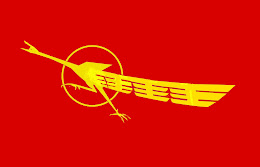





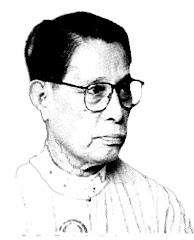



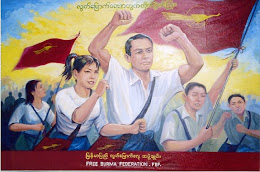





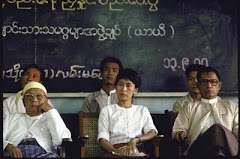

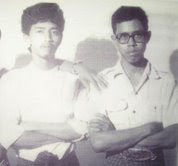

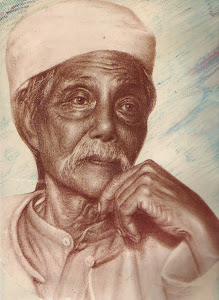
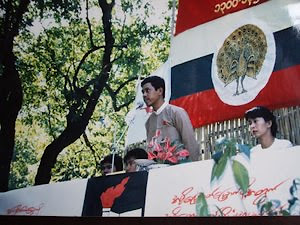
No comments :
Post a Comment